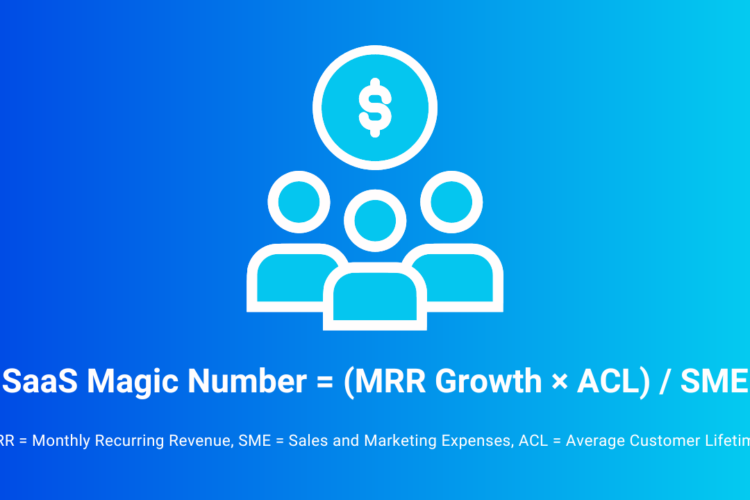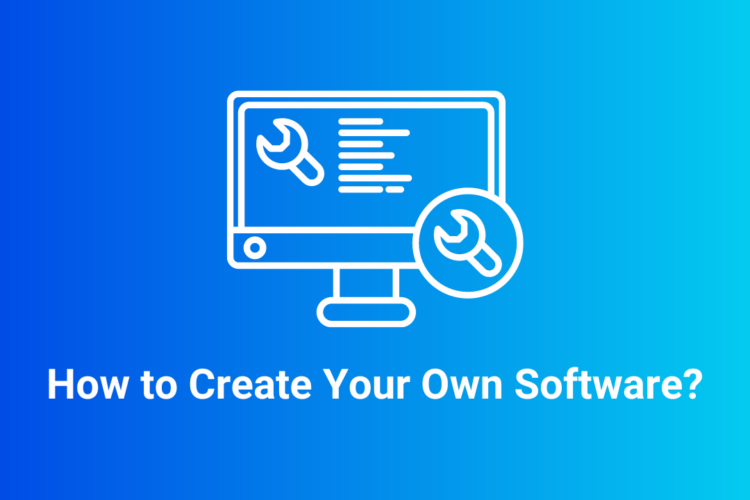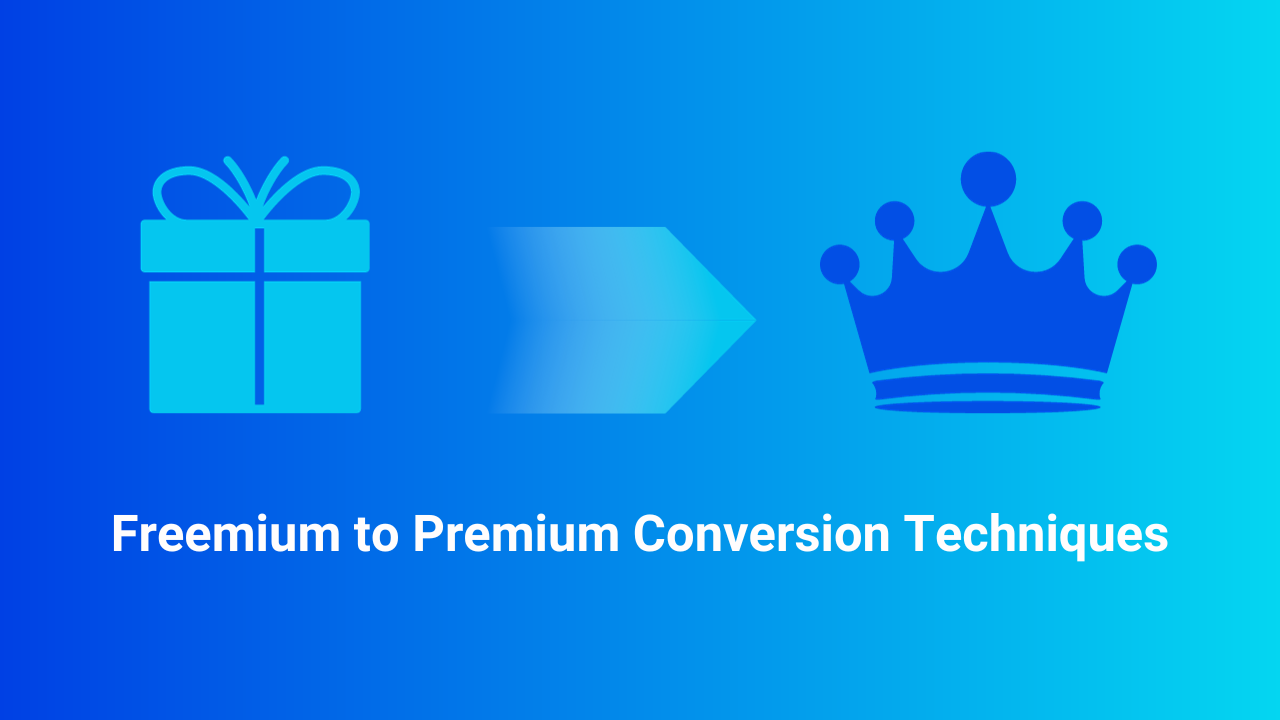
Here’s a fact: people love free stuff. There’s no denying that.
No wonder more and more SaaS companies today offer their basic product features for free. Consumers who want to unlock more features from the product will need to upgrade to the paid version. This marketing tactic is known as freemium.
Some of the biggest names who found success in using freemium include Spotify, Buffer, HubSpot, and Dropbox. They were able to prove that providing a free-forever plan with limited features can make a huge difference in generating interest, press, and customers.
Despite the fact that the freemium business model can get users fast, it’s only a viable business model if you can get a good percentage of them to convert into premium users. In most instances, it can do more harm than good, often resulting in poor product positioning and increased costs.
Getting users to upgrade is a whole different ball game. You gotta show how you will deliver more value – one that’s worth spending money for.
Here, you’ll discover some of the best ways and strategies applied by SaaS companies to give users a reason to buy your premium products without hesitation. These are the same strategies applied by SaaS companies that’ve seen tremendous results from their efforts.
Before we can explore each of them, however, let’s talk a bit more about the reality of freemium…
What Is Freemium, Really?
In a nutshell, freemium is a two-tiered user acquisition model that separates users into two categories: free tier or premium tier. Free-tier users are basically those who only have limited access to specific product features, whereas premium-tier users are those who can access advanced features provided that they pay for their account.
Under a freemium model, companies allow users to access basic-level services for free in order to establish the foundation for future transactions. That way, they’ll be able to build relationships more easily, eventually leading them to offer advanced features, add-ons, or usage limits for an extra cost.
The practice of freemium dates back to the 80s, particularly in the computer software and gaming industries. Software companies would offer basic programs without charging their consumers. The catch is, folks only have limited capabilities. Getting the full package requires them to upgrade and pay a fee.
The same goes for gaming companies. Everyone can play the game for free, but they’d have to pay if they want to unlock special features and more advanced levels.
Freemium to Premium Conversion Rate Benchmark
Unfortunately, there’s no way you can convert ALL of your users into paying customers.
This brings the question: how exactly can you determine if your freemium conversion rate meets the standard? The answer’s simple. Just study your target audience and competitors.
According to Databox, SaaS companies that serve small businesses have an average monthly conversion rate of 6-10%, whereas those that cater to medium-sized businesses have a 3-5% benchmark.
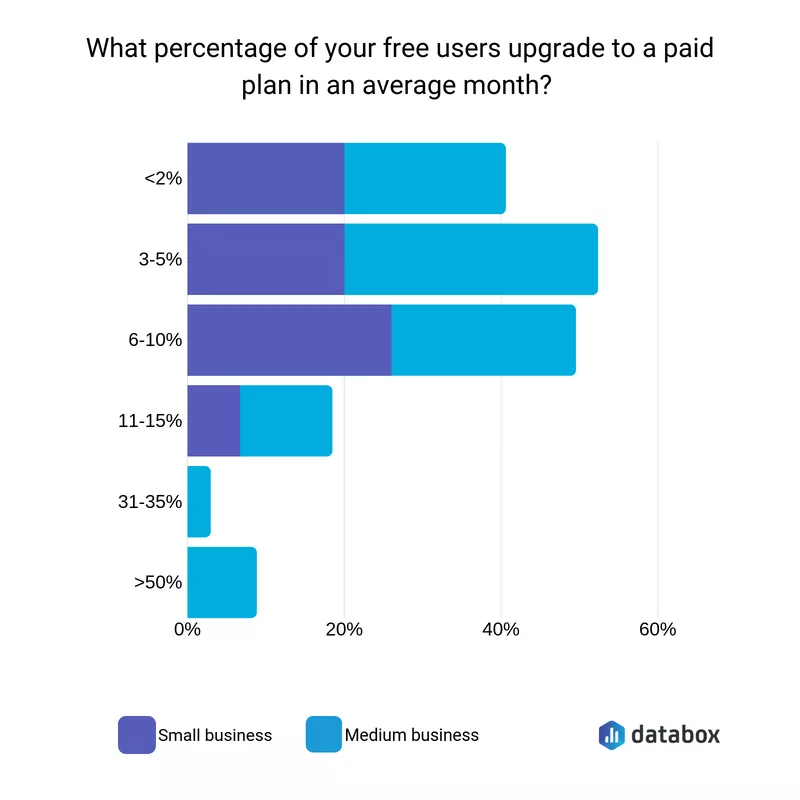
Then again, keep in mind that all SaaS products are different. There’s no need to worry if your numbers don’t coincide with what’s displayed on the graph above.
In case you’re wondering, the benchmark for freemium to premium conversion relies on the size of the businesses you work with. However, this isn’t the case with the free trial conversion rate benchmark, as it is dependent on three factors: the type of trial involved, product complexity, and your users.
Userpilot found that the B2B sector benchmark is between 14% and 25% due to the complexity of the SaaS products involved. And, with B2C companies usually offering straightforward solutions to end consumers and longer trial periods, it’s not surprising that they have a benchmark of 57%.
Freemium vs Free Trial: What’s the Difference?
Both the freemium and free trial models share the same concept of enabling consumers to try the product or service for free and convert them into paying customers. Yet, that might be the only similarity they have.
Freemiums offer a stripped-down product with limited features, while free trials provide users the full product experience, under the condition that they can only use the product for a limited amount of time.
The freemium approach works best for companies that sell simple products and are trying to grow the largest user base possible. On the other hand, the free trial method is ideal for brands that aim to showcase everything their products are capable of doing; in short, those that sell more complex or specialized products.
Proven Techniques to Convert Your Freemium Users to Premium Users
Whether you’re already using freemium but you’re struggling to boost your conversions or you’ve only heard about it and you’re seriously considering giving it a go, you’ll definitely want to take note of each suggestion listed down here. If they’ve worked wonders for your fellow business owners, you can expect them to do the same for you!
Create a Sense of Urgency
We’ve all seen ads saying something like “Act now! This is a limited-time offer!” or “You only have ONE day to claim this offer!”
And, we must say, they can truly be powerful.
The same goes for free trial products, where we encounter pop-ups displaying reminders such as “Your trial will end in three days.” This leaves many users without a choice but to type in their card details and make a purchase.
However, in the case of freemium, a more subtle approach might be better at increasing conversion rates. One effective way to do this is by giving away the full premium for free within a trial period. This will lead users to discover what they’ll be missing out on if they decide not to upgrade.
Spotify is one of the biggest names that continues to kill the freemium game. They provide real value to their users while giving them a couple of reasons to upgrade to premium. Here’s how they do it:
Freemium users aren’t just exposed to ads, but they’re also only allowed to skip six songs per hour. As soon as they reach the limit, Spotify notifies them, as what you can see below:

We have to admit that this is a smart move to prompt Spotify users to upgrade from freemium to premium. Having six chances to skip songs can get pretty annoying, and not to mention, you have ads interrupting you every now and then.
And so, to stop users from feeling frustrated, the company would show this:
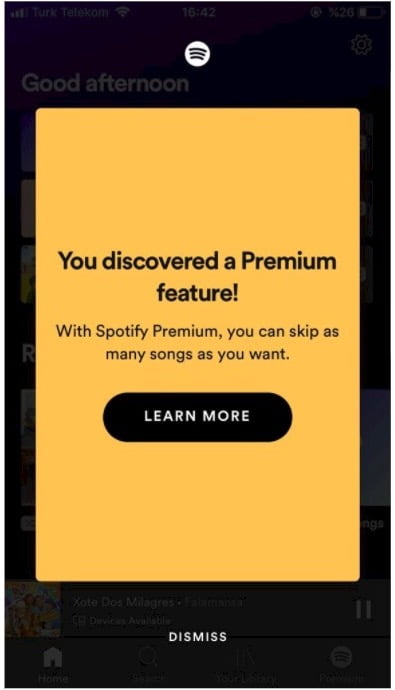
Their strategy has proven to be a success – Spotify has achieved an almost 26.6% of freemium conversion rate!
Grammarly also does a pretty exceptional job with this tactic:

Chargebee’s trial management solution can help you do just this. You’ll be able to send out automated emails before a trial’s end date and maximize upgrade opportunities.
Charge to Remove Unwanted Ads
Nobody’s a fan of advertisements. They can be annoying and intrusive, especially if they show up at an inopportune moment, like when they’re interrupting your music or video.
So, why not take advantage of the situation by running ads on your app?
Give people the opportunity to enjoy an ad-free experience when they become premium users. Take Spotify (again), for instance. Its premium upgrade includes the permanent removal of all ads, giving users nothing but a pleasant overall experience.
3. Leverage In-App Messages
In-app upgrade messages have always been extremely helpful when it comes to converting freemium users to paying customers.
If you’re not aware, in-app messages are personalized, timely notifications used by companies to communicate with their users inside the app. You can take advantage of them by notifying freemium users that it’s time to upgrade.
Conduct product analysis first, though, so you’ll be able to identify their pain points. Then, build segments and trigger upgrade messages that are relevant to each segment.
Userpilot can help you create segments of your user base, tailor targeted messages for each segment, and automate models at each stage in the user journey.
Chargebee has mobile software development kits (SDKs) that allow you to enable in-app purchases for physical or digital goods effortlessly. It also lets you collect in-app payments outside of the app store and sync all your in-app purchases across Apple and Google into the platform, giving you a consolidated view of subscriptions across all channels.
4. Use In-App Prompts
How will your freemium customers ever know about the premium features of your product if you fail to show them?
Two words: in-app prompts.
Immediately after users have reached their usage limits, you can trigger an in-app prompt informing them that they can easily extend their interaction by making an upgrade.
Here’s Slack showing you how it’s done successfully:

5. Offer Discounts for Upgrades
There are freemium users who’d love nothing more than to go premium. The only problem is, they’re on a shoestring budget.
The solution? Offer discounts…. with conditions, that is.
Many businesses give their users discounts provided that they stick with the product for at least a year. So far, this continues to be an effective strategy. And, besides having the potential to increase customer lifetime value (CLV), it also makes it easier for users to upgrade since their payment details will be recorded in your database.
Handing out coupons is perhaps the smartest hack to expand your customer base. Chargebee has a flexible couponing system where you can use a mix of discounting strategies to maximize customer acquisition and customize coupons to power your marketing campaigns.
6. Add a Full-Feature Free Trial
A full-featured free trial and a limited free-forever plan all at once? Users can’t say no to that!
What’s great about combining these two strategies is the mere fact that they complement one another. By allowing users to try all the available features with no limitations for free, they’ll gain a better understanding of your product and the value it brings.
If they can’t pay just yet, they can still use your product (minus the advanced features) by simply transferring to the free plan. Having zero access to full features anymore will likely get them to realize the true value of your product, thus deciding to become a premium member.
7. Nurture Your Freemium Users
Treating your freemium users as if they were paying buyers can also increase your odds of pushing them down the funnel.
The idea here is to help them quickly and easily experience the value you’re offering them. Explain clearly what’s in it for them when they decide to upgrade. Be sure that you mention what both the free and premium versions have in store for them.
*Provide an explanation for each tip
- Send the first email
- Score and segment your leads
- Send multiple emails during the trial tenure
- Personalize your landing page
8. Unlock Certain Features
Rather than charging users for a full upgrade so they can access unlocked features, why don’t you have them pay a lower fee? Some SaaS companies that are implementing this strategy have actually seen an incredible outcome.
Zoom is one of these companies. Because meetings on the free plan only work up to 40 minutes, users will need to sign up for their paid plan (which starts at nearly $150 a year) if they want to unlock longer meetings, as well as meetings that can host more participants.
Then again, it’s crucial that you take the time to think it through. It may not be a good idea to give freemium customers the only feature they want from an upgrade for a fraction of the price. Plus, you might have trouble coming back from offering your product in fractured parts.
The step between paying nothing and paying something is the most significant one for users. As soon as you have their commitment, they’re more likely to make a full upgrade in the near future.
With Chargebee Entitlements, you can set and enforce feature limits on multiple levels, from plans to individual subscriptions. It offers effortless software monetization, allowing you to execute plan and pricing changes at the flip of a switch and iterate on pricing without any developer dependency.
9. Send Personalized Onboarding Emails
Whether you intend to welcome your new freemium users, thank them for using your product, or provide them with more information about your product, onboarding emails are there to ensure that they start to use your product and derive value from it.
And, you know what? You can also use them to convince freemium users to make the switch.
As much as possible, personalize your onboarding emails based on user behavior so that your customers will be able to complete certain actions that are closely associated with converting. Avoid single-word CTAs as they’re known to bring little to no impact.
The key is to help customers discover the “Aha!” moment in the quickest possible way, aka the exact moment they see that your product has real, meaningful value.
MailChimp and Zapier, two of the leading email automation tools marketers use to send customized onboarding messages, can be integrated with Chargebee. This makes it possible for you to deliver your newsletters and targeted campaigns to your subscribers created in Chargebee.
10. Use Modals to Display Free Product Limitations
Rather than focusing your efforts on paid features constantly, showcasing the limitations of the free version can also help grow your freemium conversion rates.
For example, you can say that it only comes with limited usage for particular tools, such as having no free storage. Take a look at how Dropbox does it effortlessly below:
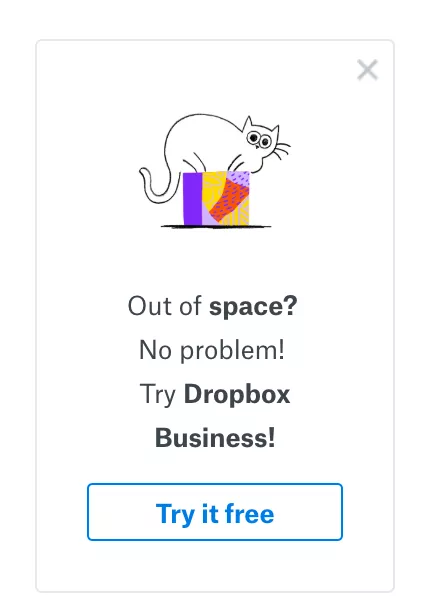
11. Offer Additional Benefits
By additional benefits, we mean services that can help users learn more about using your product, like one-on-one training or support.
One of the reasons why many users hesitate to switch to a paid plan is that they might not know how to access the additional value. They fear that they’ll end up spending their money for nothing. This is why providing a complimentary one-on-one training on your software is a move you should make.
12. Make the Transition as Seamless as Possible
Lastly, you want to create a seamless transition from freemium to paid. Remove any pain points by clearly communicating what’s involved when moving between the two tiers.
Are there extra charges? Is auto payment available? What information is required to upgrade? What type of customer service comes with the upgrade?
If streamlining the transitioning process sounds like a daunting task for you, consider forming a team collaboration with Chargebee. The SaaS company has helped thousands of subscription businesses streamline a range of tasks, among which include planning and billing management during the transition from freemium or any other model.
For instance, with its extensive network of payment gateway providers and multi-currency support, you’ll be able to simplify your recurring billing workflow, make automatic payment processing easy, and watch your recurring revenue grow. Chargebee also comes with smart dunning that enables you to retry payment declines and failures.
The Takeaway
While there’s no doubt that using freemium can generate buzz around your products, it does nothing to your sales unless it can get users to upgrade to premium. So, if you’re looking to convert freemium users to paying customers, following these steps will certainly make it happen.

